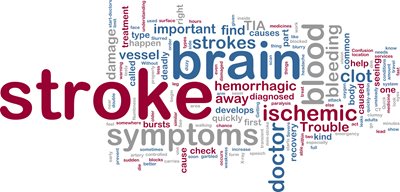Stroke Care: Why Where You Go for Treatment Matters
In stroke, the mantra is “time is brain,” meaning the faster you can recognize the symptoms and get to the hospital, the better your chances for recovery. UR Medicine stroke care experts Drs. Tarun Bhalla and Amrendra Miranpuri explain why new research indicates that it may also be important to get to the right hospital.
Nearly 800,000 people in the U.S. suffer a stroke every year. It’s the fifth leading cause of death and the No. 1 cause of long-term disability. However, if caught early, many stroke victims can make a full recovery.
There are different types of strokes but the most common form is an ischemic stroke, when the blood supply to a part of the brain is interrupted because something is blocking a blood vessel. The current best treatment is a clot-busting drug called tissue plasminogen activator, or tPA. But to work properly, tPA must be given within four and half hours of the first stroke symptoms. Hospital emergency departments have become adept at quickly identifying strokes and administering tPA. Still, many people don’t get to the hospital in time because their symptoms weren’t recognized or they occurred during sleep.
New studies show that an alternative surgical procedure called endovascular mechanical thrombectomy may ultimately be a more effective treatment for some who have strokes. And there’s an added plus: the procedure can be done even after the window for tPA therapy has passed.
This minimally invasive surgery involves threading a catheter through the blood vessels and physically removing the obstruction. Studies show that people who undergo this procedure recover more function and independence than those who just have tPA.
Endovascular procedures are not suitable for every stroke case. But hospitals that are prepared to perform them around the clock, with experienced neurosurgeons and support staff, may be better equipped to provide the best care to someone experiencing a stroke.
It’s important to know the signs and symptoms of stroke so you can seek help quickly. The FAST acronym is a good tool to use, although any sudden change in someone’s neurological function (strength, sensation, vision, speech, balance, etc.) may be a warning sign and reason to seek medical help.
FAST stands for:
Face: Ask the person to smile. Does one side of the face droop?
Arm: Ask the person to raise both arms. Does one arm drift downward?
Speech: Ask the person to repeat a simple phrase. Is their speech slurred or strange?
Time: If you observe any of these signs, call 911 immediately.
Strong Memorial Hospital is the region’s only Comprehensive Stroke Center, a designation conferred by the American Heart Association/American Stroke Association that indicates the hospital has the staff with the expertise, training, and resources necessary to treat the most complex stroke cases. With more than 2,000 visits annually, UR Medicine has one of the highest stroke-patient volumes in North America.

Tarun Bhalla, M.D., Ph.D., is an endovascular and cerebrovascular surgeon and the director of Stroke and Cerebrovascular Services at UR Medicine.

